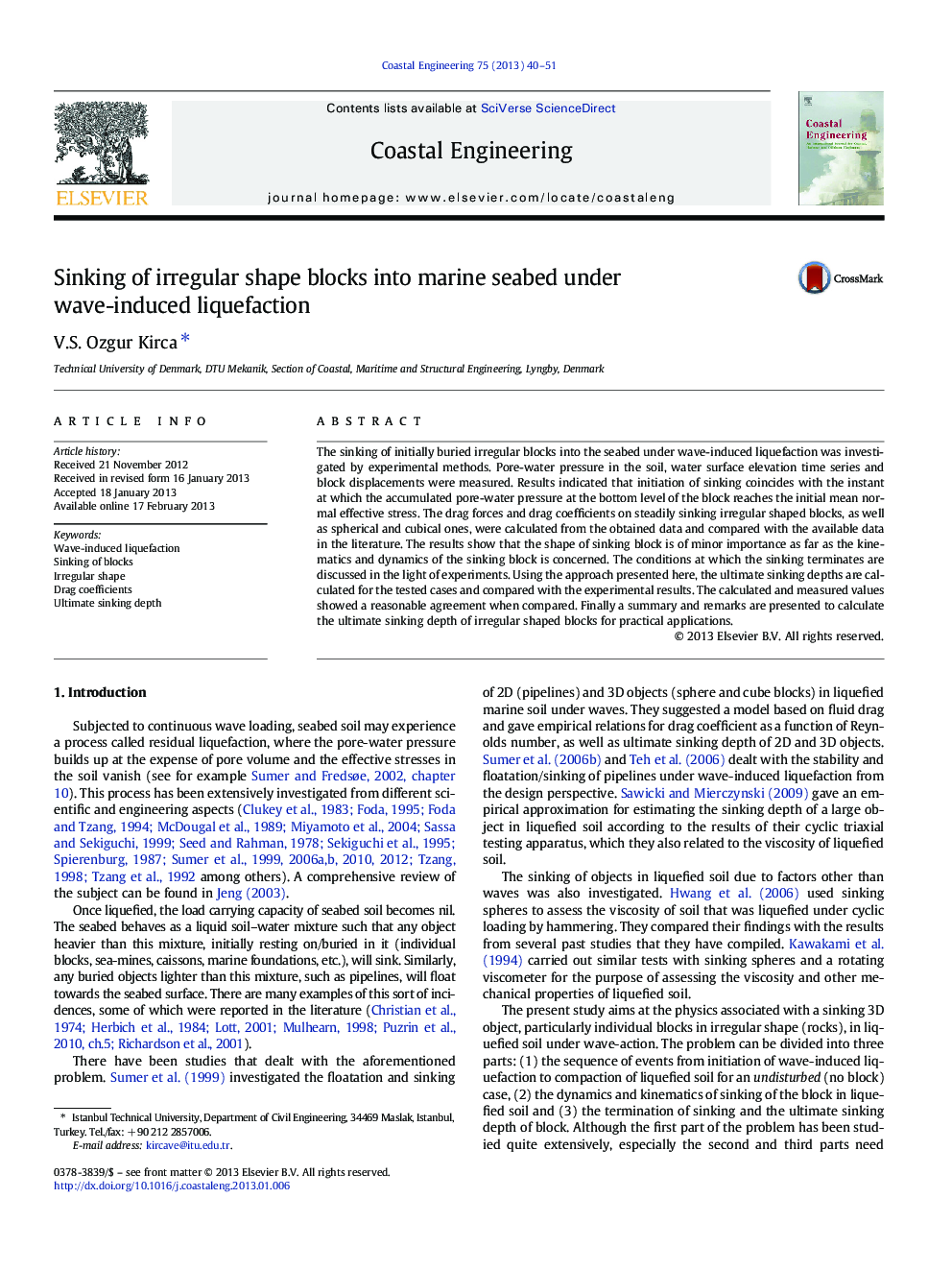| Article ID | Journal | Published Year | Pages | File Type |
|---|---|---|---|---|
| 1720857 | Coastal Engineering | 2013 | 12 Pages |
The sinking of initially buried irregular blocks into the seabed under wave-induced liquefaction was investigated by experimental methods. Pore-water pressure in the soil, water surface elevation time series and block displacements were measured. Results indicated that initiation of sinking coincides with the instant at which the accumulated pore-water pressure at the bottom level of the block reaches the initial mean normal effective stress. The drag forces and drag coefficients on steadily sinking irregular shaped blocks, as well as spherical and cubical ones, were calculated from the obtained data and compared with the available data in the literature. The results show that the shape of sinking block is of minor importance as far as the kinematics and dynamics of the sinking block is concerned. The conditions at which the sinking terminates are discussed in the light of experiments. Using the approach presented here, the ultimate sinking depths are calculated for the tested cases and compared with the experimental results. The calculated and measured values showed a reasonable agreement when compared. Finally a summary and remarks are presented to calculate the ultimate sinking depth of irregular shaped blocks for practical applications.
► The sinking of blocks under wave-induced liquefaction is experimentally studied. ► It is shown that shape of the block is of minor importance in sinking assessment. ► An estimation strategy for sinking velocity and sinking depth is presented.
